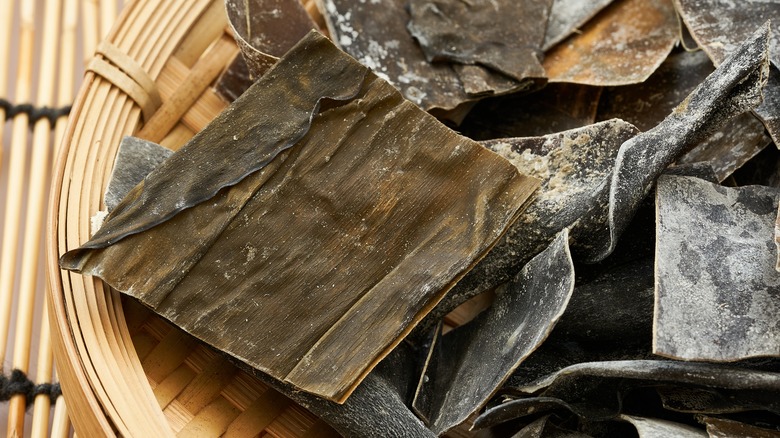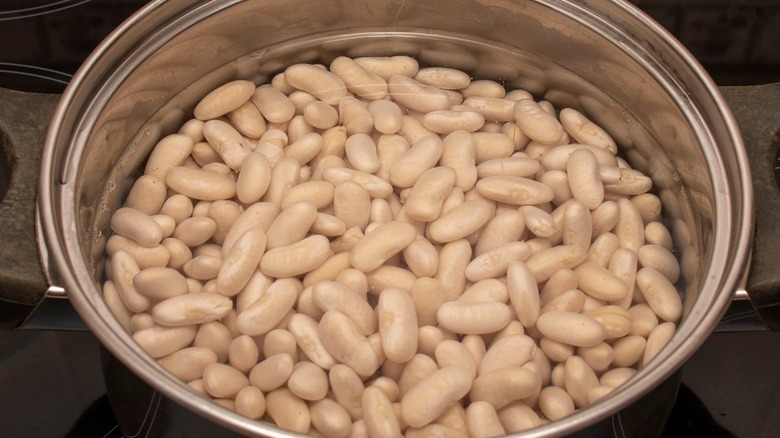Kombu Is The Umami-Packed Ingredient For More Flavorful And Tender Beans
Finding ingredients to add sweet, spicy, or sour flavors is straightforward — there are many common components exhibiting these flavors. However, figuring out how to integrate elusive notes of umami is more tricky. For example, say you're cooking a pot of beans and you want to enhance them with an extra touch of savouriness, where should you turn?
One option is to look in the Asian pantry for inspiration and use kombu. This Japanese seaweed is rich in natural MSG, which will pair delectably with a pot of beans. Plus, it contains amino acids, which will not only soften the beans, loosening their chewier outer shells, but will aid their digestion too. Best of all, when slow-cooked, the kombu disintegrates into the dish, so no need to deal with any extra hassle of having to fish it out of the pot.
Although kombu hails from the sea, its earthy, slightly sweet flavors won't overwhelm the beans at all. In fact, it will pair well with flavor palates outside of Asia, too — for example, Tuscan-style beans with bacon. Let's dive into how to use kombu when cooking beans.
Add kombu for a savory note while softening the beans
When cooking sturdier dried beans like black, pinto, or kidney beans, some methods call for soaking the pulses in a saltwater bath overnight to enable a softer, more digestible skin. This form of brining works due to ions that interact with minerals found in the beans. Kombu's chemical makeup accomplishes the same task while alleviating the need for a long soak. Instead, simply place a strip of kombu into the water while simmering the beans, and it'll work its magic. It's not necessary to add much — one strip for a pound of beans will do.
Kombu's flavor isn't too predominant, instead adding savory notes in addition to the textural difference. Pair it with all of the same flavors as in any typical bean recipe – your regular herbs, spices, and vegetables will all still meld into the dish. In fact, the seaweed's flavor is mild enough to still produce a delicious and useful aquafaba. So you can also apply this technique to other legumes, and ingredients such as lentils and split peas, too.

